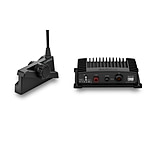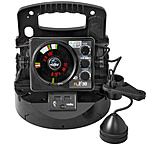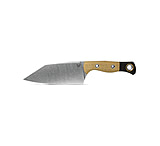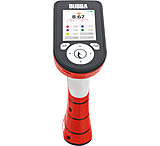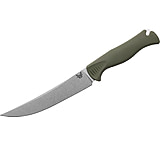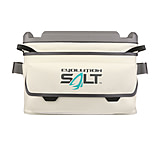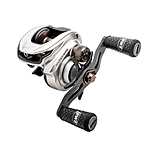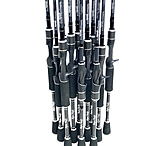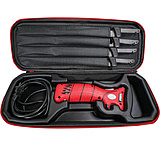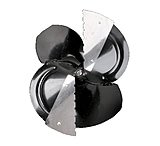Hard baits are fishing lures made of a hard plastic shell. There are a variety of hard bait fishing lures available to help anglers attract fish. Hard bait lures attach to your terminal tackle and come in many forms, such as crankbaits, jerkbaits, and top water lures. Unlike live bait, you can reuse them over and over again on your fishing trips. Each type of lure attracts fish by mimicking bait fish, making them perfect for catching larger predatory fish. Bait fish is the type of prey your target fish typically eats. In this guide we will explain the different types of hard baits, including crankbaits vs jerkbaits, and how they are commonly used.![]()
Crankbait Lures
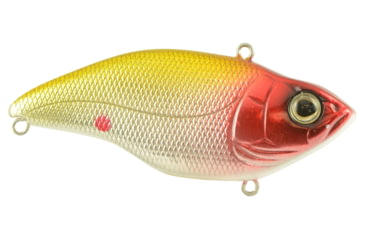 A crankbait is best used by casting it out and reeling it straight back to you. Even if you vary the speed of retrieval, the bait operates the same way each time. The two primary types of crankbaits are lipped and lipless crankbaits. Lipped crankbaits have a bill in the front of the lure, which forces the crankbait down into the water when you reel it in. These crankbaits float, so when you aren’t retrieving them, they will start to float toward the surface. This allows the bait to stay within certain depths of the body of water you are fishing, making them ideal for shallow waters.
A crankbait is best used by casting it out and reeling it straight back to you. Even if you vary the speed of retrieval, the bait operates the same way each time. The two primary types of crankbaits are lipped and lipless crankbaits. Lipped crankbaits have a bill in the front of the lure, which forces the crankbait down into the water when you reel it in. These crankbaits float, so when you aren’t retrieving them, they will start to float toward the surface. This allows the bait to stay within certain depths of the body of water you are fishing, making them ideal for shallow waters.
Many crankbaits are designed for use in certain depths based on the size of the lip. Larger lips cause the bait to dive faster as you retrieve it. Lipless crankbaits do not have a bill that makes them dive deeper. Instead, lipless crankbaits are sinking lures that will stay at the bottom due to their weight. Even though the mechanics are different, you still cast and retrieve them like lipped crankbaits. Ensure you select a crankbait that is best suited for the depths you will be fishing.
Crankbaits are also designed to mimic certain prey. Many crankbaits make a rattling sound that attract predatory fish, and they will be painted to resemble different forms of bait fish or crawfish. The design and size of the crankbait you use depends on the fish you are trying to catch. You should pick a crankbait that matches the look and size of the bait that the target fish you are after primarily eats. While crankbaits are primarily used for largemouth and smallmouth bass fishing, they can also attract walleye, crappie, and perch.
Jerkbait Lures
 To use a jerkbait properly, you must twitch or move the fishing rod in a way that causes the bait to mimic an injured bait fish. This requires some finesse, so these fishing baits are more difficult for beginners. Most jerkbaits will have a lip or bill that allows them to dive deeper into the water as you are reeling. Since jerkbaits are often floating or suspending lures, once you stop retrieving them, they begin to float or suspend in the water. This keeps them from hitting or staying at the bottom.
To use a jerkbait properly, you must twitch or move the fishing rod in a way that causes the bait to mimic an injured bait fish. This requires some finesse, so these fishing baits are more difficult for beginners. Most jerkbaits will have a lip or bill that allows them to dive deeper into the water as you are reeling. Since jerkbaits are often floating or suspending lures, once you stop retrieving them, they begin to float or suspend in the water. This keeps them from hitting or staying at the bottom.
Jerkbait fishing lures are designed to dive to certain depths determined by the size of the lip, and that depth is often printed on the lure packaging. Be sure to select one that is best suited for the depths you will be fishing. Jerkbaits are frequently used for bass fishing and perform best in clear to semi-clear water.
Top Water Lures
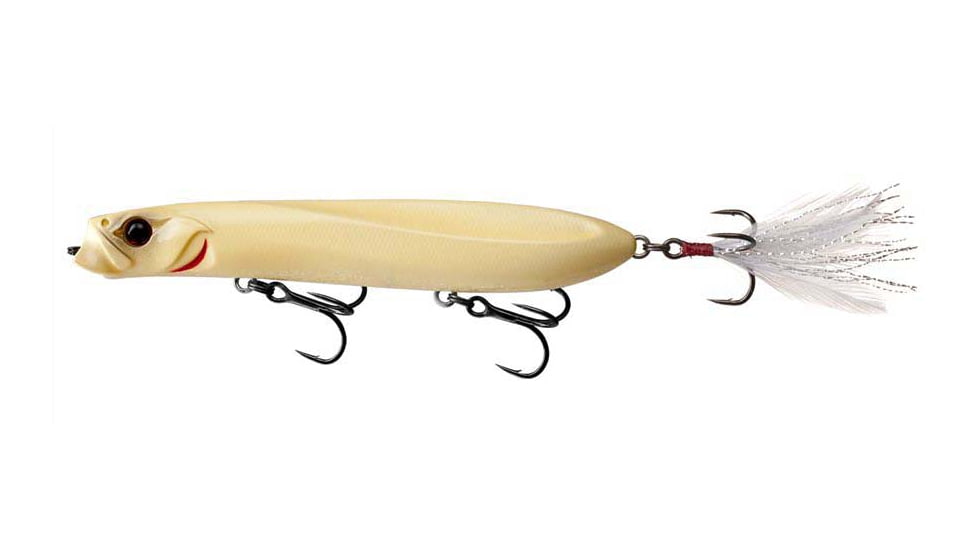 Top water lures are floating plastic baits that mimic small bait animals as you reel them in across the surface of the water. Top water frogs are some of the most common top water lures. Top water frogs are primarily used for largemouth bass in areas where there are a lot of frogs present.
Top water lures are floating plastic baits that mimic small bait animals as you reel them in across the surface of the water. Top water frogs are some of the most common top water lures. Top water frogs are primarily used for largemouth bass in areas where there are a lot of frogs present.
Another common top water lure is a top water popper. You must twitch your fishing rod similarly to a jerkbait when retrieving a popper. This motion cause the top water popper to displace water and make a popping sound, which attracts larger game fish. Top water poppers are used for a variety of fish species, including largemouth and smallmouth bass. Larger top water popper lures are also used for various saltwater fish in deep water areas, so they are pretty versatile.
Walkers are another type of top water lure that you retrieve in a similar way as a popper. As you reel the walker in and twitch the fishing line, the lure starts to zig zag back and forth. This motion and water displacement attracts fish such as largemouth bass.
Choosing the Best Hard Bait Fishing Lure Color and Design
All hard baits are designed to attract fish. Some baits are painted to resemble specific bait, such as certain species of minnows, shad, or crawfish. Others are painted in extremely colorful ways to attract the attention of fish. The color or design of lures you should pack in your tackle box depends on the fish you are targeting and the body of water you are fishing. For example, light-colored or natural-colored baits are often best used for fishing in a lot of sunlight and clear water, as this ensures the fish can see the lure clearly. Dark colors are often used in dark settings or night because it is easier for the fish to see the outline of the lure in dark conditions. Bright colors are best suited for murky water.
Summary
Hard bait lures can be very useful while fishing. They often excel at producing noise and mimicking the different colors and movements of bait fish. When choosing a hard bait, you first need to determine the type of fish you are trying to catch. Then, find out the most common type of bait in the area that your target fish may be after based on the water conditions and natural bait fish in the environment. The last step is to determine the depth you will want to be fishing. For example, for bottom feeder fish, you want a lure that can get to the bottom, either with or without sinkers.
There are many options for hard baits to help catch a variety of fish, and some work better in specific environments. So, you may need to try more than one. However, there is definitely a compatible lure out there for the type of fishing you prefer, whether you need a soft plastic lure, hard plastic lure, or live bait. Shop online at OpticsPlanet.com today for amazing deals on fishing gear from top-rated brands trusted by anglers of all experience levels.






